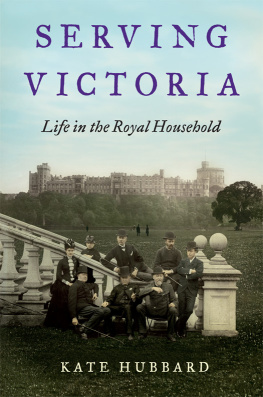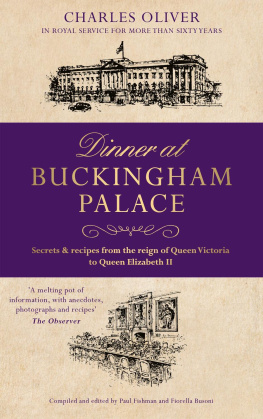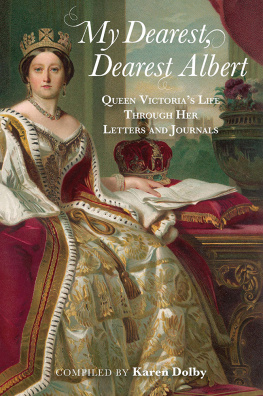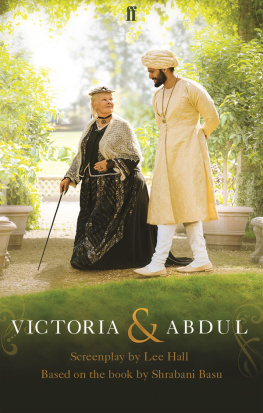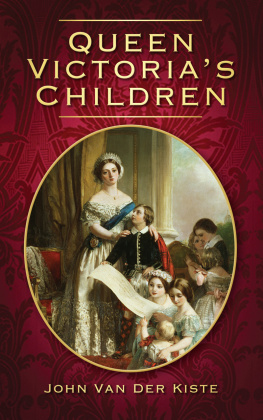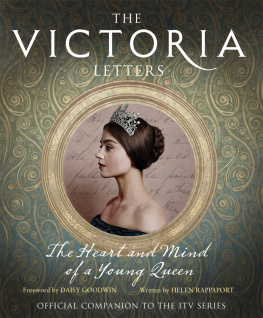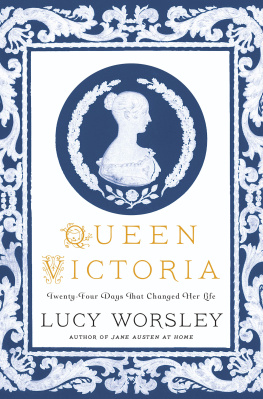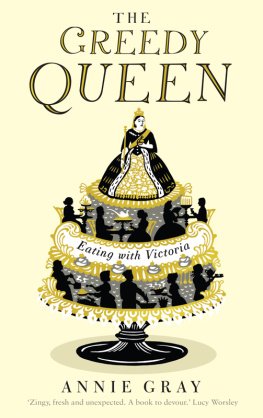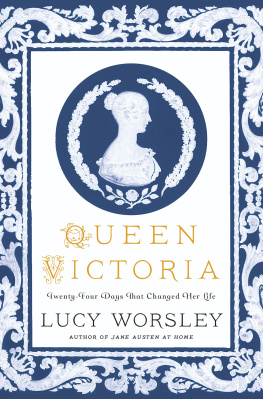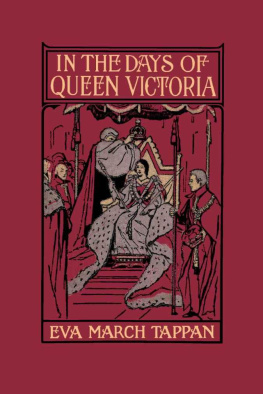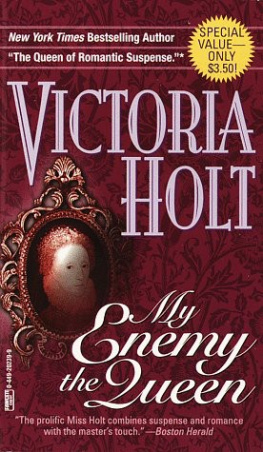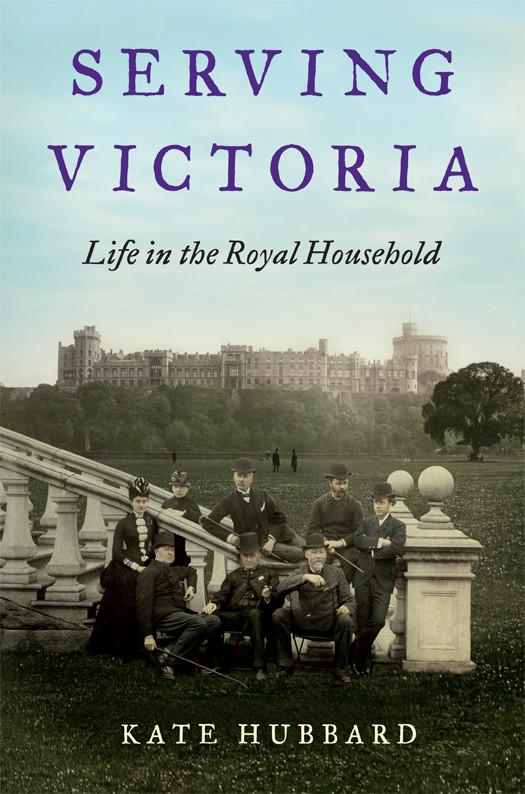
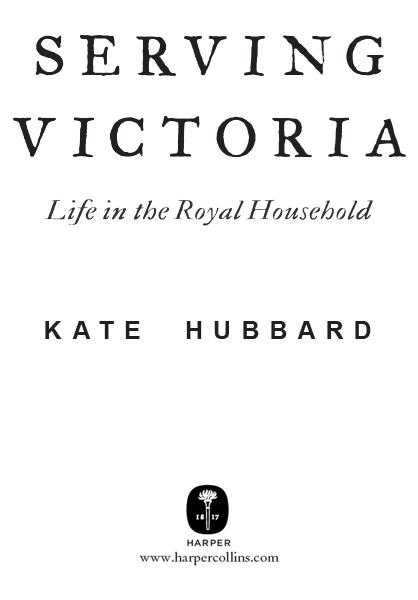
For my parents
Contents
Illustrations in the text:
All illustrations in the text come from the Reid family archive, unless otherwise stated.
Picture section 1:
All pictures in this section come from The Royal Collection 2012 Her Majesty Queen Elizabeth II, unless otherwise stated.
Picture section 2:
All pictures in this section come from the Reid family archive, unless otherwise stated.
This book could not have been written without the help and generosity of a number of people who made private archives available to me. I owe a great debt of gratitude to Sir Alexander and Lady Reid, not just for letting me pore over the many albums containing James Reids letters, diaries and photographs, but for all their kindness and hospitality on several occasions. Michaela Reids own book on Sir James has been an invaluable resource.
Similarly, I am extremely grateful to Laura Ponsonby and Catherine and Ian Russell, for allowing me access to the Ponsonby papers at Shulbrede Priory and for their interest and support throughout. I would also like to thank Lord Cobham, for allowing me to read and quote from Sarah Lytteltons letters at Hagley Hall, and the Earl and Countess of Harewood, for letting me quote from Charlotte Cannings letters and journals at Harewood House. Material from the Royal Archives at Windsor and extracts from letters from Queen Victoria are quoted by gracious permission of Her Majesty Queen Elizabeth II. Many thanks to Pam Clark and her staff at the Royal Archives for all their time and patience, to Sophie Gordon, Curator of Photographs at Windsor, to Lisa Heighway, who showed me many wonderful photographs from the Royal Collection, to Kate Heard, Curator of Prints and Drawings, and to Daniel Bell. Also thanks to the staff at the British Library, the London Library, Lambeth Palace Library and Leeds City Library.
For permission to reproduce photographs and other illustrations I am very grateful to those individuals and institutions credited in the list of illustrations. I would like to thank Michael Hunter, Curator at Osborne House, for answering questions about Osborne and showing me around the Household Wing, Sir Hugh Roberts, for helping me with queries about Windsor Castle and pointing me towards the Windsor inventory, and A. N. Wilson for suggesting the novels of Charlotte M. Yonge as a way of understanding what it meant to be High Church in nineteenth-century England. For help in various ways, thanks to Randal Dunluce, Margaret and Pat Lloyd, Paul Quarrie, Anna Robinson, Desmond Shawe-Taylor and Giles Waterfield. Claudia FitzHerbert read an early draft and Victoria Millar a later one (whilst jiggling her new baby); their comments and suggested revisions have made this a better book. My thanks to them and to all the friends and family who have offered advice, encouragement and good cheer along the way, including Lucy Baring, David and Emma Craigie, Phil Eade, Alexa de Ferranti, Jason Goodwin, Ed and Nicole Hubbard, John and Caryl Hubbard, Flora McDonnell, Rebecca Nicolson, Adam Nicolson, Kate OSullivan, John Paul Rathbone, Ben and Harriet Rogers, Sarah Raven, Sweetpea Slight, Denise Stephenson and David and Janie Worthington. Finally, many thanks to my agent Georgia Garrett and to all at Chatto & Windus, most particularly my editors, Jenny Uglow, who provided bolstering at crucial moments and much wise advice, and Juliet Brooke, who guided the book through its final stages so expertly.
When Georgiana Liddell was appointed a maid-of-honour to Queen Victoria in 1841, she received a letter of advice from her mother, Lady Ravensworth. You must accustom yourself, she wrote, to sit or stand for hours without any amusement save the resources of your own thoughts. Keep yourself to yourself and whatever spare time you have, employ it well and lay not up your talents in a napkin. She urged Georgy to be discreet, to abhor idle gossip, to shun flirtation and intimacy with the gentlemen of the court, and to spend her salary wisely. And she finished by invoking duty: Your first duty is to God; your second to your Sovereign; your third to yourself.
This letter sets the tone for life at the Victorian court. A sense of duty, discretion, moral rectitude, self-reliance such were the qualities that would stand you in good stead as a member of the Queens household, and they were not qualities that there had been much call for hitherto. The morally elastic courts of the Hanoverians and earlier had tolerated, indeed comfortably accommodated, love affairs, adultery and illegitimacy, while a lack of organisation and control had invited abuse: positions were available for favourites, perks were to be enjoyed, and questions werent asked. Victoria may have been just eighteen when she came to the throne in 1837, but she knew her own mind and she was quite adamant that her court would, above all things, be respectable . Abuses would never be entirely eradicated, and scandal did erupt, in a humiliatingly public fashion in 1839, but it was not to be repeated.
In their family life, Victoria and Albert set out to create a model of domestic virtue, and similar standards of behaviour were expected from their court. This did not mean an entirely new personnel, but court appointments were now carefully vetted and those of doubtful reputation firmly excluded. When selecting her ladies and gentlemen the Queen generally looked to the lesser aristocracy, who, it was felt, were morally sounder and more sensible of the honour conferred on them than their wealthier, more fashionable counterparts (the beau monde tended to mock when it came to their queen and her consort). Gentlemen were usually ex-army, thus exchanging one form of service for another. Ladies were sometimes grateful for a salary, that, without being lavish, was certainly useful. For those with families, the months in waiting could be hard indeed; for those without, court could offer a refuge of a kind, while maids-of-honour might find themselves a husband (discreet flirting permitted).
The Victorian court, an odd mix of never-ending house party and boarding school, of social ennui and regimentation, was absolutely particular to its time. Edward VII, who enjoyed the beau monde as much as Victoria disapproved, presided over a court that had a great deal more in common with those of his Hanoverian forbears than that of his mother, though with George V there was some return to Victorian values. As for today, the notion of service, let alone royal service, is so radically different that comparison seems futile, yet something of the mystery and hush that hung over Victorias court seems to linger and royal service tends to run in families some of the same names that served under Victoria Adeane, Lascelles, Fitzroy have cropped up in Elizabeth IIs household (the likes of Paul Burrell, though, would have had no place at the Victorian court). Perhaps its not so very different after all.
I first came across collected letters and diaries, written by Victorias ladies-in-waiting and maids-of-honour, in the course of writing a short biography of the Queen for children. I found these uneventful records the stiff evenings, the damp carriage drives, the endless waiting about for orders curiously fascinating. Their very dullness intrigued. I wondered about these women, how readily they submitted to the dictates and obligations of royal service, whether such service was actually more of a penance than an honour, whether their professed devotion to the Queen was entirely sincere. I wondered about what they didnt say as much as what they did, and I began to read more widely, discovering other members of the royal household. Here, I felt, was a new way of approaching Victoria, through the eyes of those who served her, who knew her as well, arguably a good deal better, than her own family.
Next page
